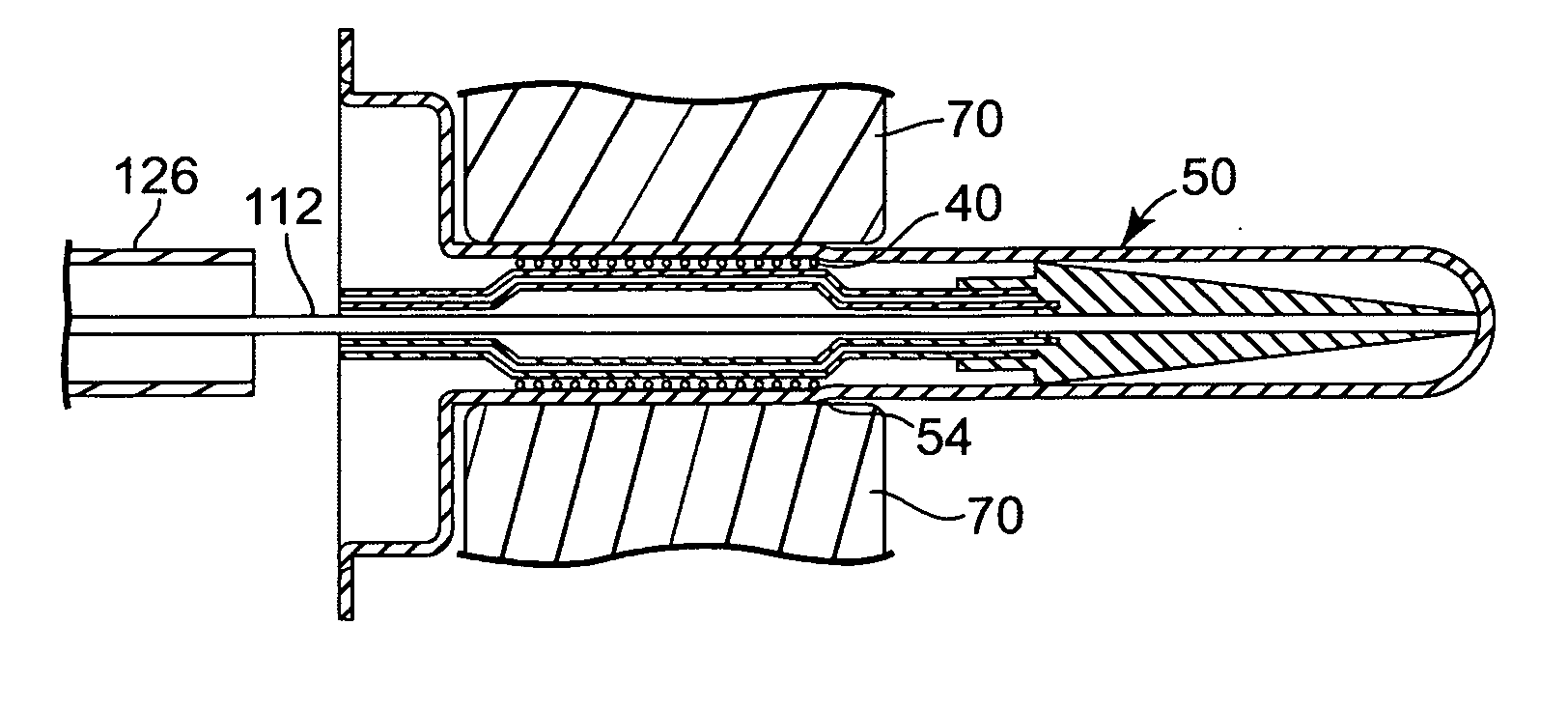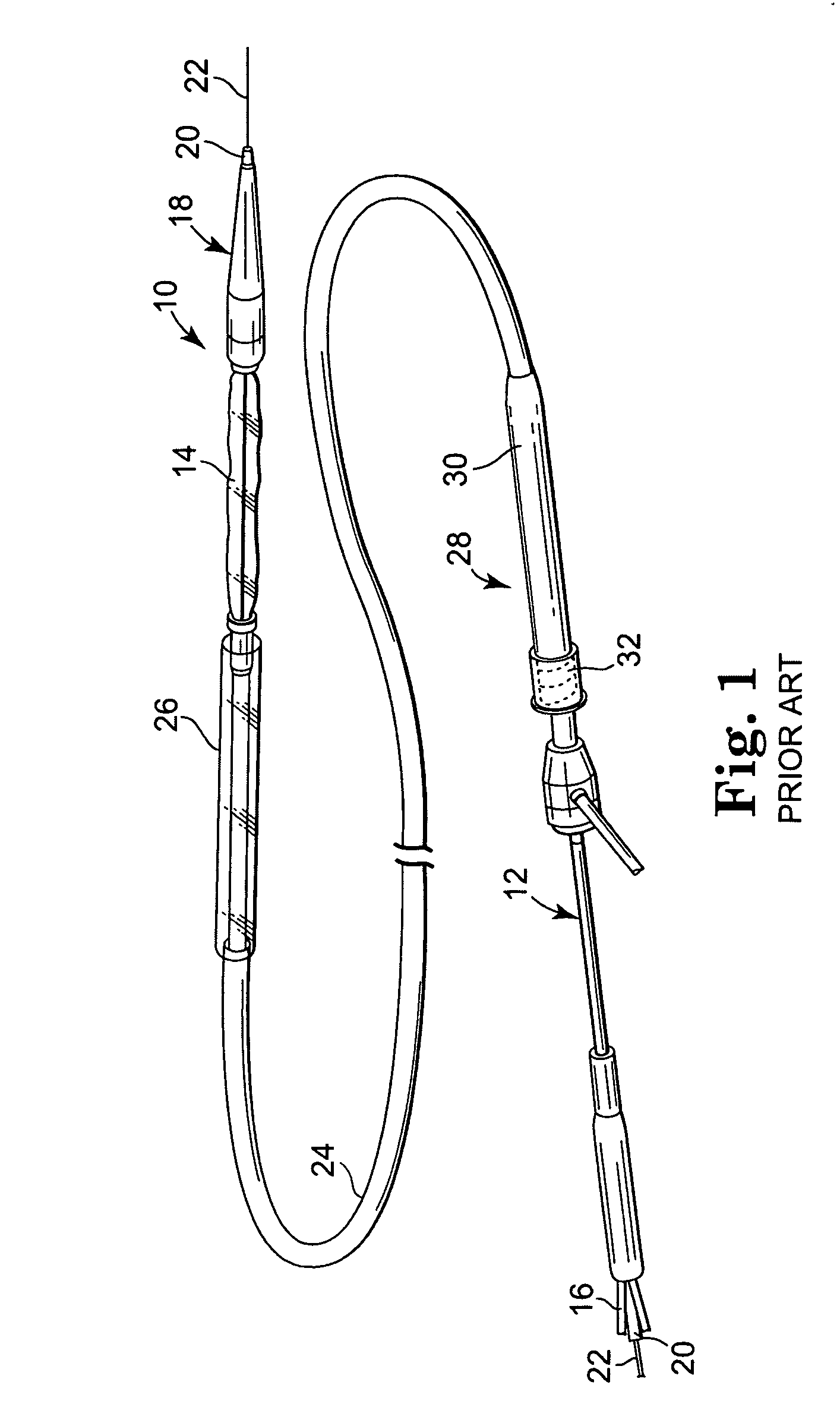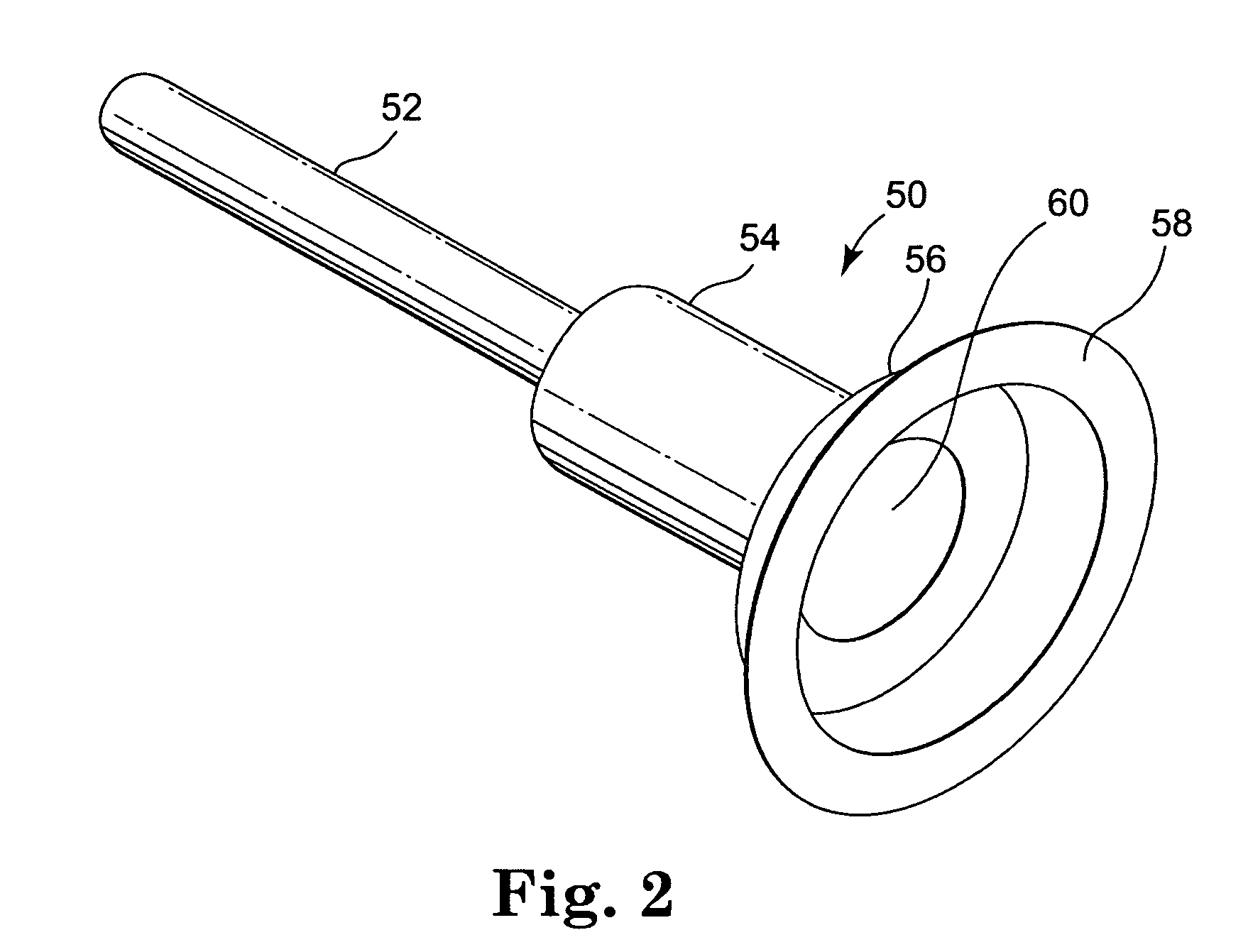Sterile cover for compressible stents used in percutaneous device delivery systems
a compression stent and percutaneous device technology, applied in the field of cardiac valve disease treatment, can solve the problems of affecting the quality of life of the stent, the difficulty or inability of hand-held devices to be used, and the cost of disposable devices is typically more expensive than disposable devices, so as to prevent contamination of the stent and eliminate or minimize contact.
- Summary
- Abstract
- Description
- Claims
- Application Information
AI Technical Summary
Benefits of technology
Problems solved by technology
Method used
Image
Examples
Embodiment Construction
[0023] Referring now to the Figures, wherein the components are labelled with like numerals throughout the several Figures, and initially to FIG. 1, an exemplary prior art system 10 is illustrated for percutaneous insertion and implantation of a biological venous valvular replacement to a desired implant location, such as the pulmonary vein, a valved conduit or other location, for a defective or malfunctioning valve. System 10 is used for delivering a stented valve to a desired implant location, such as the pulmonary vein, a valved conduit, or other location, where such a system can be utilized with the devices and methods of the present invention. System 10 generally comprises an elongated balloon catheter 12 having an inflatable balloon 14 near the distal end of the system 10. Balloon 14 is connected for fluid communication with a lumen 16 that extends through the length of catheter 12. Lumen 16 provides for inflation and deflation of the balloon 14 with a fluid, such as a radio-o...
PUM
 Login to View More
Login to View More Abstract
Description
Claims
Application Information
 Login to View More
Login to View More - R&D
- Intellectual Property
- Life Sciences
- Materials
- Tech Scout
- Unparalleled Data Quality
- Higher Quality Content
- 60% Fewer Hallucinations
Browse by: Latest US Patents, China's latest patents, Technical Efficacy Thesaurus, Application Domain, Technology Topic, Popular Technical Reports.
© 2025 PatSnap. All rights reserved.Legal|Privacy policy|Modern Slavery Act Transparency Statement|Sitemap|About US| Contact US: help@patsnap.com



